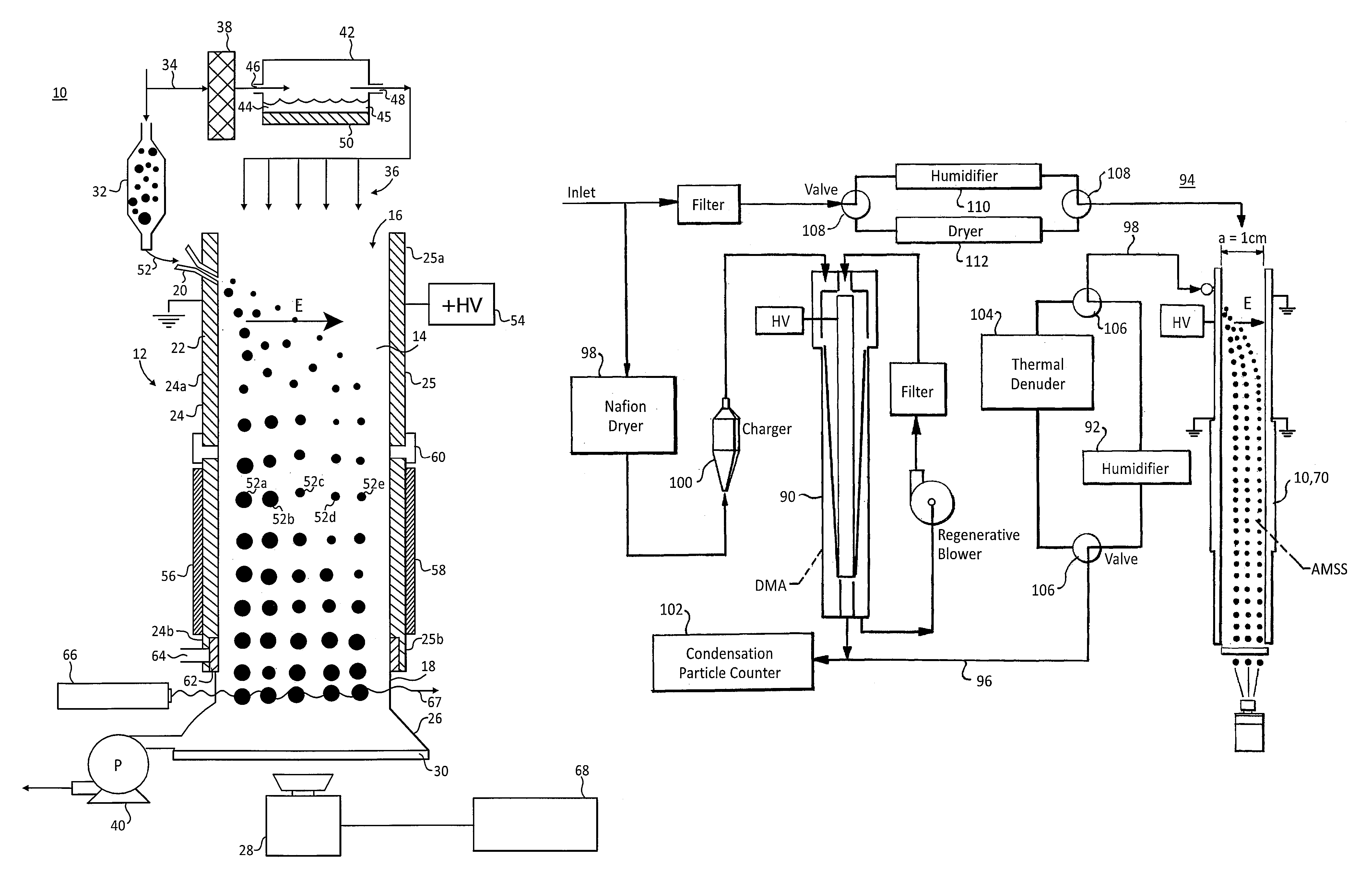Aerosol mobility size spectrometer
a technology of mobility size and aerosol, which is applied in the direction of measurement devices, instruments, material analysis, etc., can solve the problems of high inhomogeneous spatial and temporal distribution of atmospheric aerosol, inability to understand ambient aerosol properties, and often compromised aircraft-base measurements, so as to improve the ability to study and improve time resolution
- Summary
- Abstract
- Description
- Claims
- Application Information
AI Technical Summary
Benefits of technology
Problems solved by technology
Method used
Image
Examples
Embodiment Construction
[0026]Referring first to FIG. 1, a schematic cross-section of a preferred form of an aerosol mobility size spectrometer 10, formed in accordance with the present invention, is shown. The spectrometer 10 generally includes a housing 12 and a camera 28 for detecting aerosol streams exiting the housing. The housing 12 defines an inner chamber 14 and includes an inlet 16, an outlet 18 and an aerosol injection port 20 adjacent the inlet. The inlet 16, the outlet 18 and the aerosol injection port 20 all communicate with the inner chamber 14. The housing 12 further includes a separation section 22, which applies an electric field E across the interior chamber 14, as will be described in further detail below.
[0027]The housing 12 may take various forms, but in the preferred embodiment, the housing includes two parallel walls 24 and 25 that are spaced apart a known distance. The spacing between the plates 24 and 25 is preferably about 1 cm and the widths of the plates are preferably about 10....
PUM
| Property | Measurement | Unit |
|---|---|---|
| time resolutions | aaaaa | aaaaa |
| size distribution | aaaaa | aaaaa |
| particle sizes | aaaaa | aaaaa |
Abstract
Description
Claims
Application Information
 Login to View More
Login to View More - R&D
- Intellectual Property
- Life Sciences
- Materials
- Tech Scout
- Unparalleled Data Quality
- Higher Quality Content
- 60% Fewer Hallucinations
Browse by: Latest US Patents, China's latest patents, Technical Efficacy Thesaurus, Application Domain, Technology Topic, Popular Technical Reports.
© 2025 PatSnap. All rights reserved.Legal|Privacy policy|Modern Slavery Act Transparency Statement|Sitemap|About US| Contact US: help@patsnap.com



